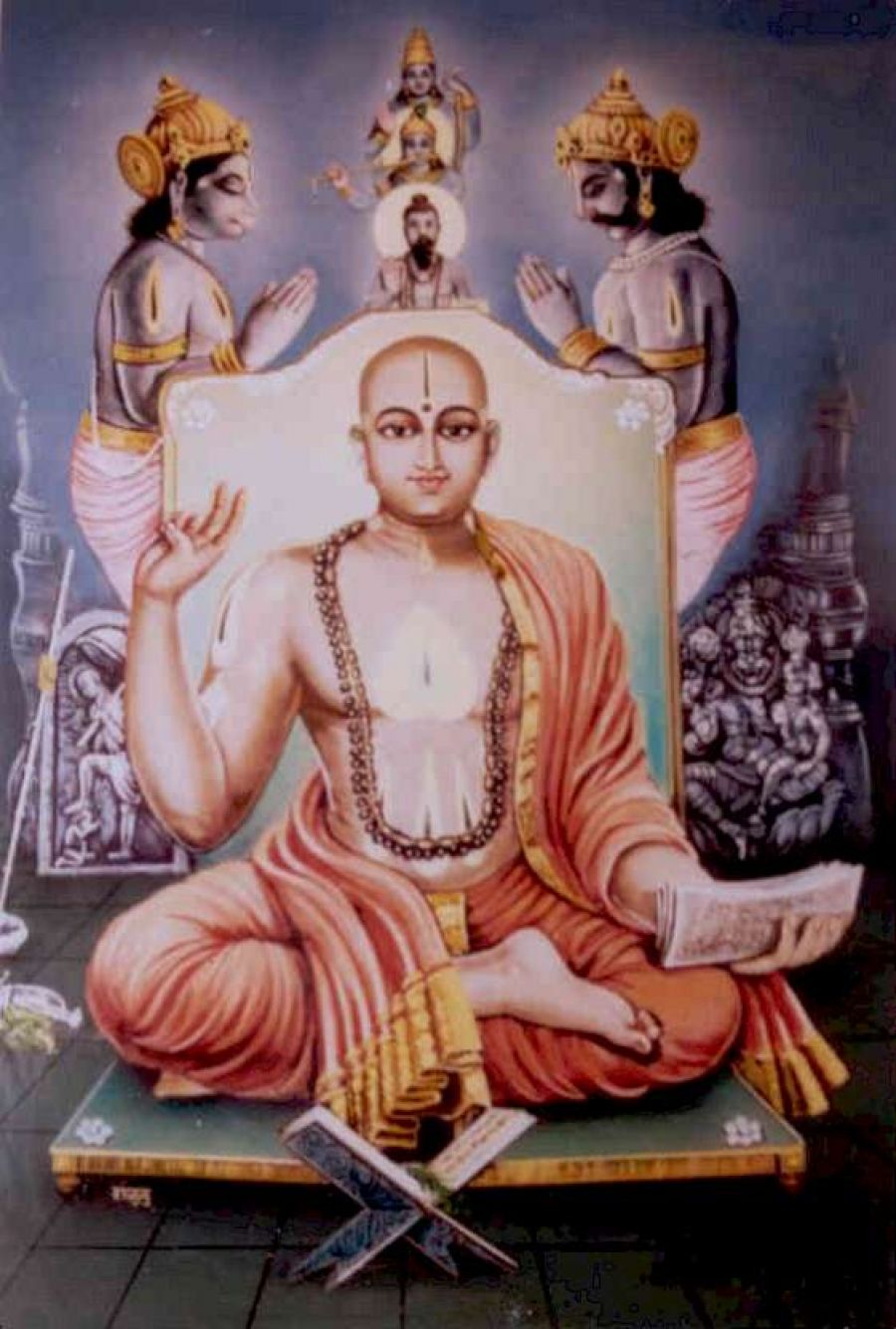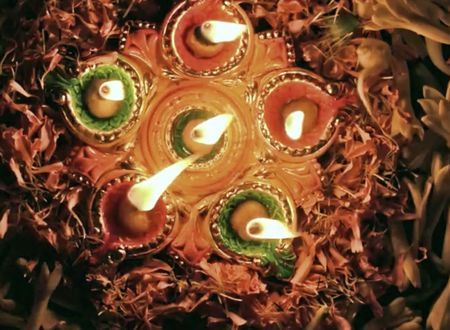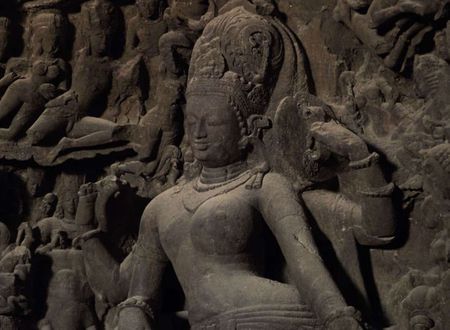I was watching a coffee conversation of a renowned business leader with a business news anchor . The leader was talking about his desire to learn from Vedanta and in particular the advaita ( non dual philiosophy) and therefore had hired some advaita experts to guide his employees and organization. A sudden light went on in my head — Wow !Advaita is everywhere — the non dual philosophy is trending across the globe — from business boardrooms to the drawing room discussions to spiritual discourses . In fact if you were to google –Vedanta or even sanatana dharma — most of the posts that would come up — would be related to the non dual philosophy . They key advaita thought — that there is one reality — there is no difference between the human and the divine — and everything else in this world is an illusion is summed up by the famous sentence — Aham Brahmasmi .Ironically ,a Netflix series( completely unrelated to Advaita or Vedanta ) made this sentence (although perhaps not the meaning )more commonplace than all of our ancient scriptures. So much so, that the Sanskrit sentence appeared on T shirts , mugs , stickers and laptop key pads !
“But how do you face real life with advaita ? “the TV anchor quizzed the leader- “in performance assessments — what if the subordinate tells the boss — all of this is maya and you and I and the big boss are the same — what happens then ? Does everyone get the same increment? Increments are anyway maya”– guffawed the news anchor .
“ In a vedanta world ,you don’t feel any pain if you run into a wall since none of it ( you or the wall or your emotion)-is real -is that truly the reality ?The leader joined with an embarrassed laugh — “Lets get real” — he said and the discussion ended .
The words “lets get real” kept ringing in my mind and reminded me of the famous saint Madhavacharya . Sri Madhvacharya, (1238–1317 AD) also known as Ananda Tirtha and Poorn Pragnya, is the founder of the Dvaita school of philosophy. His doctrine (Tattvavada) asserts that this world is real and there is no need to deny the existence of the world to realize God.
Propagating the Bhakti marga or the path of devotion for God realization, Sri Madhvacharya preached dualism — the infinitely perfect God is independent and the world of matter and spirit is dependent on God.
Today, however we talk about bhakti in the same breath as advaita — completely forgetting that it originated in the diametrically opposite dvaita school.
His life and times make an interesting story . He laid the foundation of the bhakti marga which then had saints like Chaitnya Mahaprabhu ,Meerabai and Naamdev as luminaries . He constantly emphasized that Sri Hari or Lord Vishnu is “Supreme” and worship of Krishna as taught in the Bhagavat Purana was the centre of his religious precepts.
He advocated bhakti as the chief and the easiest way to attain the Divine . His core tenets were — to learn and study the Vedas , control one’s senses , be dispassionate and surrender to Krishna .
Early Life : Madhvacharya was born in 1238 in a family of Tulu speaking Brahmins — Narayana Bhat(also called Madhyageha Bhat) and Vedavati in the village of Pajaka, about 20 kms from Udupi, in South Kanara district of Karnataka. There are several mythical stories around his magical birth and he is also widely regarded in the region to be an avatar of Vayudeva or Hanuman .
The parents weren’t blessed with any kids for a long time and had worshipped Lord Narayan for 12 long years to beget a worthy son and the Lord pleased with their prayers, took the form of a man and climbing the flag post in the village announced that Hanuman would soon be born to revive Vedic dharma. There was an auspicious sound of the Dundhubi heralding Madhava’s birth and the ecstatic parents named the child — Vasudeva.
Even as a child, he was extraordinary in every respect, and repeatedly astounded his teachers, and is said to have performed miracles. Once when his mother was way , the little Vasudeva was crying inconsolably and his sister could not bear the sight of her baby brother in so much pain . She innocently offered him a basket of cooked horsegram that she found in the kitchen as a play thing and Vasudeva happily ate it up .While Madhaygeha and Vedvati lost their sleep when they learnt their little baby had horsegram and continued to wonder what ailment and pain will befall him -Vasudeva was playing cheerfully .
Vasudeva is said to have freed his father from the clutches of a loan shark, by giving him a handful of tamarind seeds which turned into gold when the creditor accepted the seeds.
Vasudeva had a great physique and wrestled with strength and great skill- defeating even stronger and bigger rivals. It is said that he also killed the demon Mannimanta, who attacked him in the form of a snake, by crushing the snake’s head under his toe. He is therefore also regarded sometimes as the avatara of Bheema ( the powerful Pandava. And this is something he has proclaimed himself in his treatises . Do note that, interestingly — Bheema was born from the ansha and boon of Vayudeva from Kunti — and this story builds on the earlier assertion of Vasudeva being a form of Vayudeva-and also an avatara of Hanuman who by the way is also the son of Vayudeva .)
Even as a young boy of four years, Vasudev demonstrated his knowledge when he politely interrupted a Puranic discourse by correcting the narrator and shared his version which didn’t just stun the listeners but built a veneration in them for the little boy . His father discovered that little Vasudeva was like a sponge — he soaked up everything taught to him very quickly and had to be taught new concepts every day.
Soon it was time for Vasudeva to begin his formal education. He was initiated into the sacred thread ceremony (upanayan) and sent to the gurukul of Totantillaya at the age of 4.
He was not only good at Vedic studies but also excelled in sports like swimming, wrestling, athletics and , and other physical activities. Although he was playful and not concentrating and would often play pranks on his fellow students , he would flawlessly recite the hymns and lessons, sometimes reciting shlokas that the guru had not even taught until then.
Towards the end of his stay in the Gurukul, Vasudev felt that he should become an ascetic and study the scriptures in search of their true meaning. After graduating, he wanted to take Sannyasa and attain the Divine . He also wanted to learn and bring to the people — the path to get closer to Krishna — the supreme God in his eyes .
To be continued









Comments & Discussion
5 COMMENTS
Please login to read members' comments and participate in the discussion.